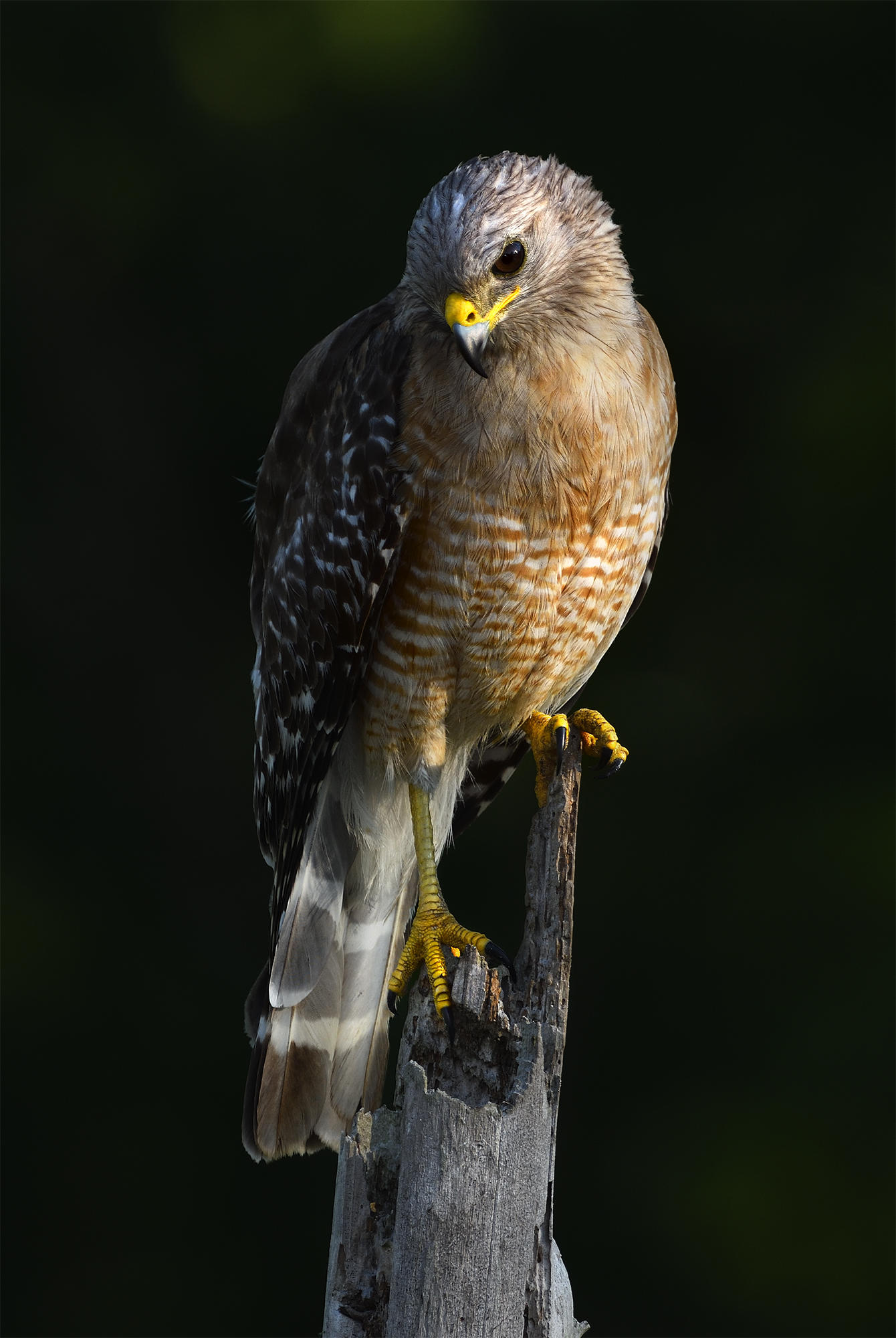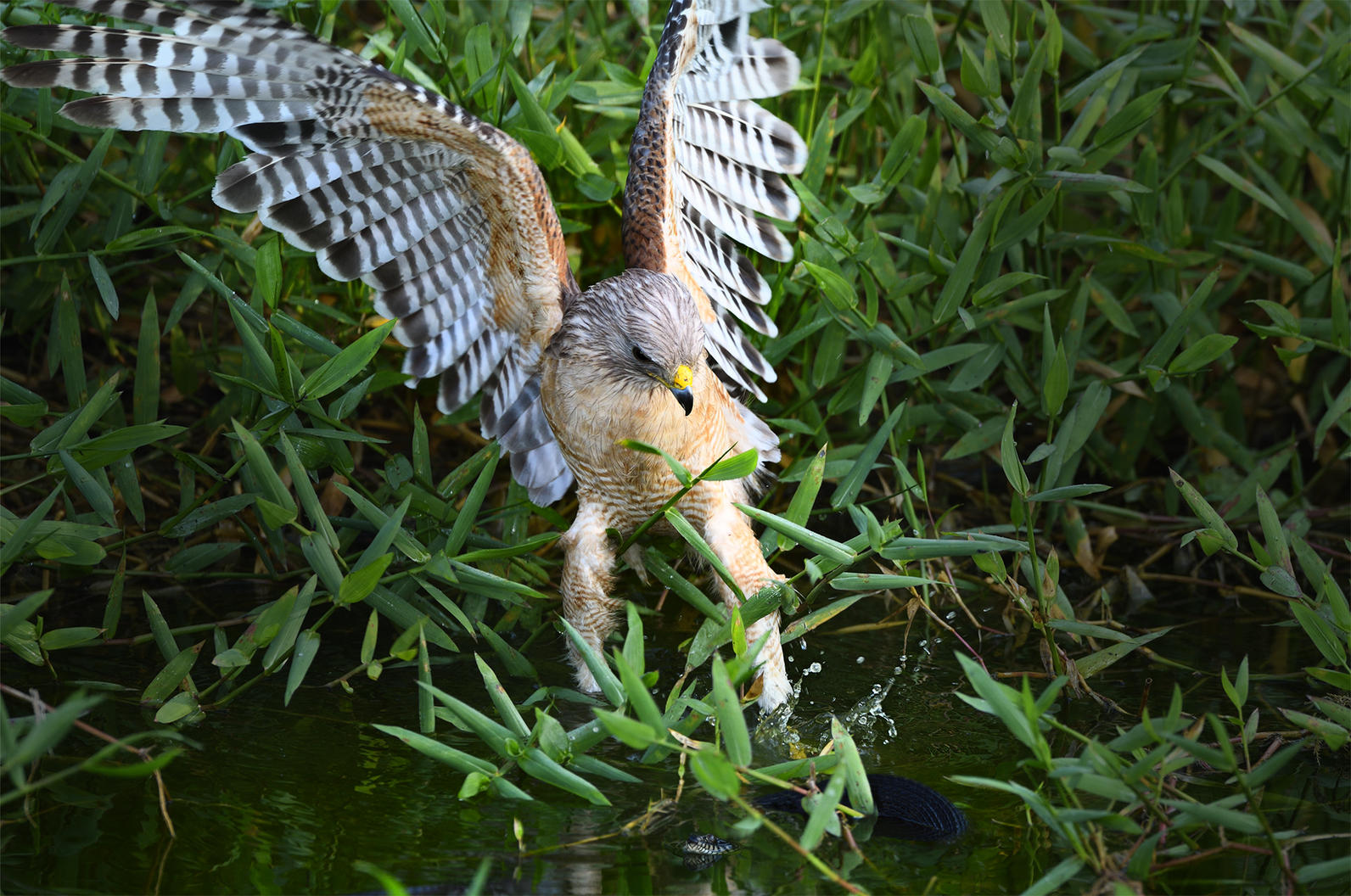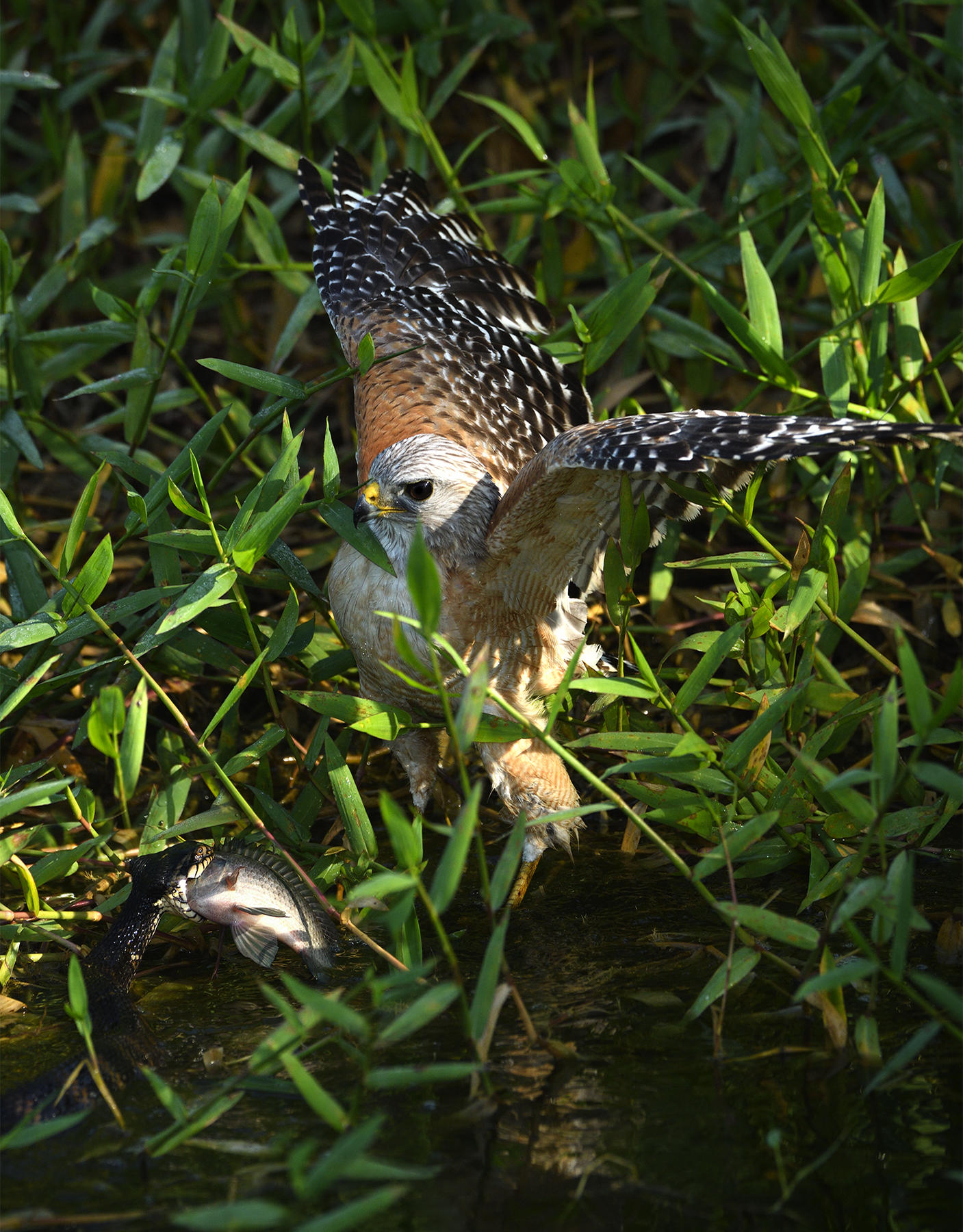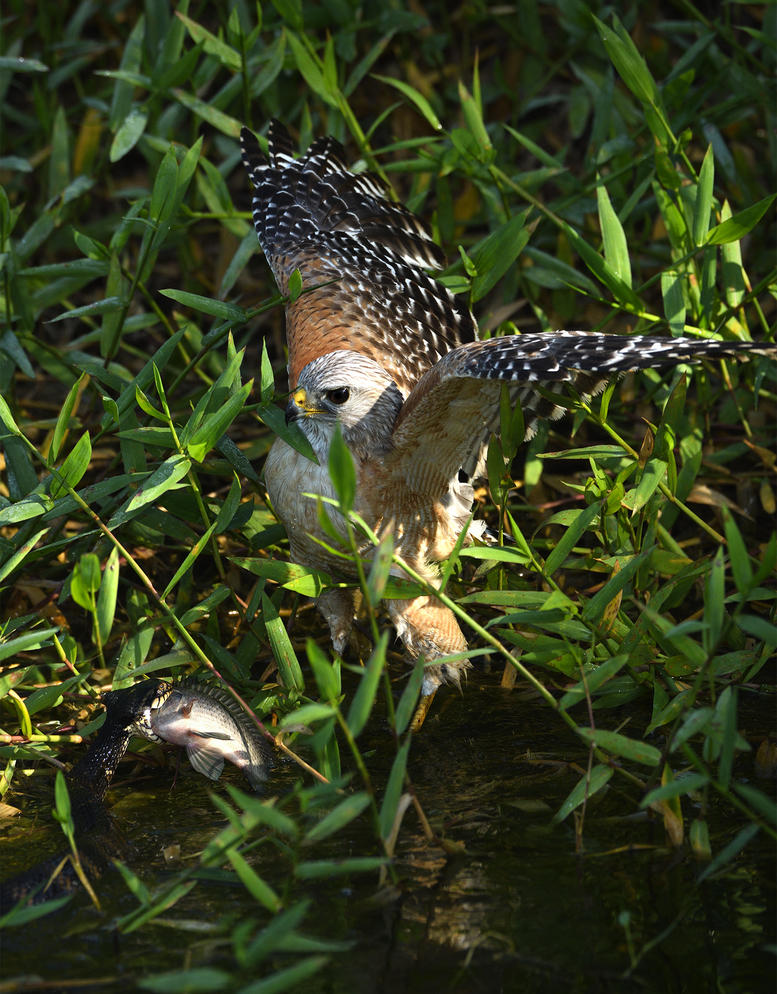by R.J. Wiley
During the winter months in Southwest Florida we receive little rain, causing a dry down during March and April that lasts until rains start again in early summer. As lakes and ponds turn to shallow and isolated pools, fish and other wildlife become increasingly concentrated and vulnerable to predators. As the water levels go down, predators are attracted to the concentrations of fish, crayfish, and other aquatic prey.
For a wildlife photographer, this is the mother load. In one location I often see spoonbills, egrets, herons, alligators, owls, ibis, Wood Storks, and more. The birds are so focused on the feeding frenzy that they take little notice of the watching people.
I remember clearly the day I spent photographing at a small pond that was then only about six inches deep near Audubon’s Corkscrew Swamp Sanctuary in Naples, Florida. While adjusting my lenses and equipment, I spotted several banded water snakes in the water, ranging from 2 to 4 feet in length and actively capturing fish. As they fed, three Red-shouldered Hawks watched them carefully.

Why weren't the hawks eating the snakes?
One hawk sat on a branch next to the water and watched intently. While photographing the bird, I suddenly heard splashing below me, and turned to just in time to see one of the snakes catch a fish. Using a 500 mm lens to take image after image of the snake, I saw the hawk land directly in front of the reptile. I knew I couldn’t capture both in the same frame, so I quickly raised the camera to capture the hawk with its wings still open.
When the snake saw the hawk, its mouth dropped open and out plunked the fish. In an instant, the hawk grasped the flopping fish with its talons and flew off, the other two hawks following close behind. It all became clear: the hawks avoided eating the snakes because the snakes caught fish for them.
A fellow standing near me said he had seen them do that several times over the past couple of days. I returned to the pond in hopes of photographing this again, though the complex dance between the two species made capturing good images a bit difficult.
I found the hawk perched on a post intently watching the action down below. After some time had passed, he flew down next to the water’s edge near one of the banded water snakes and started to scream. To my surprise, the snake didn't move. Either it was afraid and thought freezing was the best way to hide, or it knew it was too large for easy consumption and assumed that the hawk wouldn’t bother. After screaming, the hawk walked over and started to tap on the snakes back with his foot. When that didn't seem to affect the snake, the hawk flew back up to his perch, very agitated.

At first, I used a 500 mm lens and was too close to get the snake and fish and the hawk into the same frame. I quickly photographed the fish and snake, then and moved up and photographed the hawk before stitching the two images together.
I have never seen this behavior before and wonder if the hawk learned to rely on the snake’s ability to catch fish. Several days passed and the pond showed no life at all; even the snakes where gone.
Luckily, I know that the rains will return, the ponds will refill, and the ageless cycle will start all over again.







